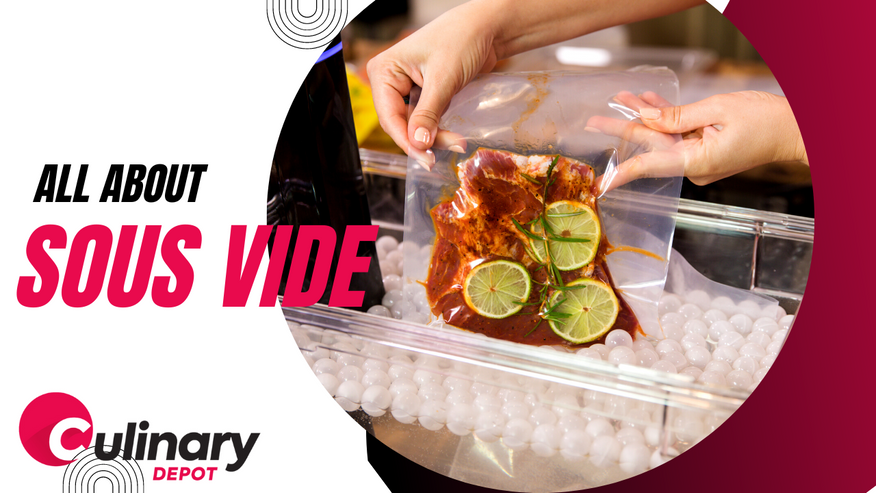May 4th 2018 - J. Vigotsky
What is Sous Vide Cooking?
Great chefs do everything in their power to create delicious meals. Whether it’s using new ingredients, changing cooking temperatures, or exploring alternate cooking methods, there are nearly infinite ways for chefs to subtly alter the taste of a dish. One way in particular that chefs are pushing culinary boundaries is by using sous vide cooking methods. French for “under vacuum,” sous vide cooking consistently churn outs entrées that are tender and succulent. The method is commonly utilized when cooking chicken, steak, beef, lamb, pork, seafood, and even vegetables.
What Is Sous Vide
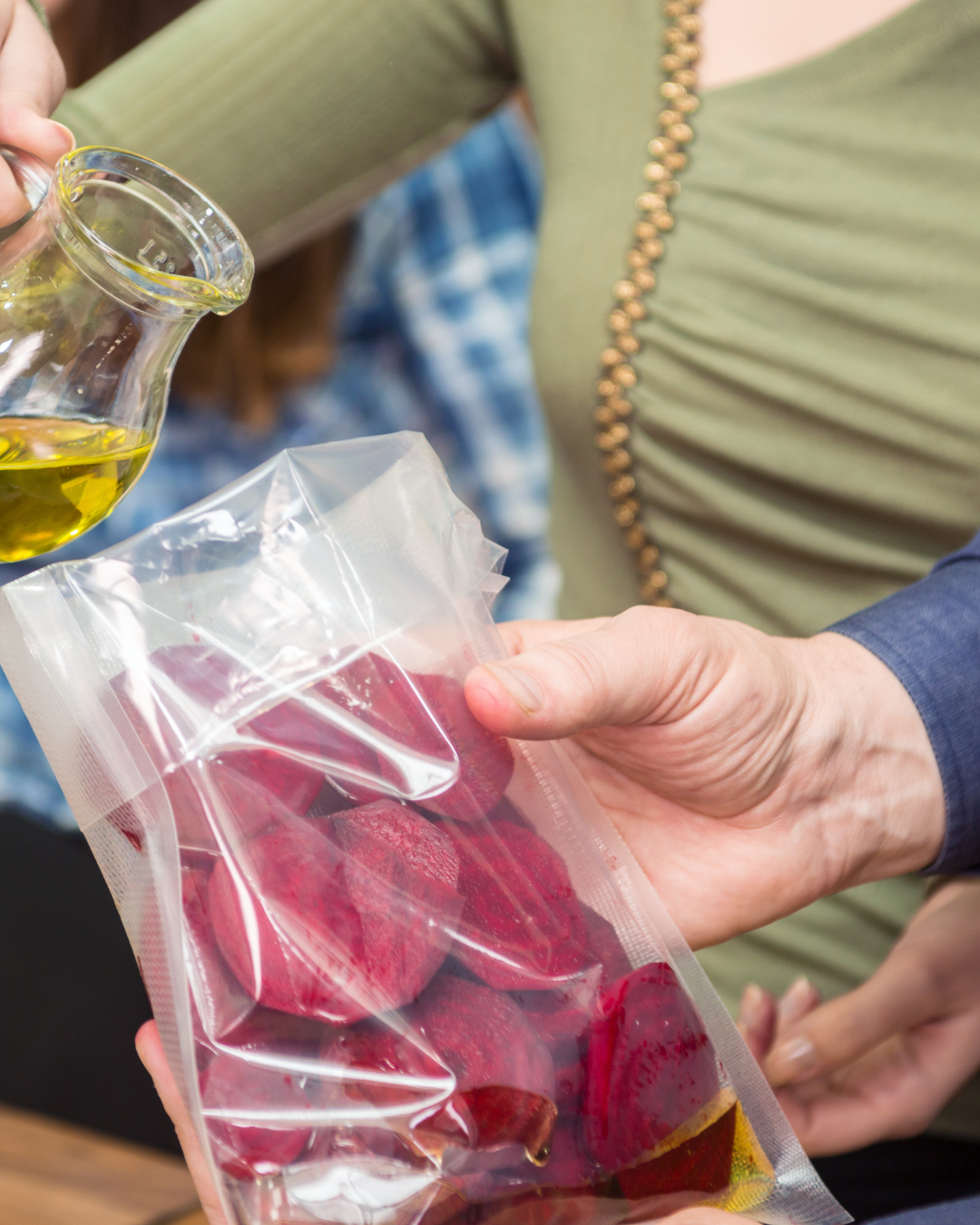
The term "sous vide" refers to the use of vacuum-sealed bags, which are frequently required when employing this method of cooking. The French word literally translates to "under vacuum." However, nowadays when people say "sous vide cooking," they usually mean any cooking done in a water bath maintained at an exact temperature, regardless of whether or not a vacuum is used.
Steaks, chops, shrimp, lobster, vegetables, and even massive portions of meat like pig shoulders and legs of lamb can all benefit from the precision and consistency that sous vide cooking provides. Quick-cooking foods, such as steaks and chicken breasts, can be cooked precisely to your liking using sous vide. Perfect results can be obtained without any need for prodding with a thermometer, cutting and peering, or jabbing with a finger.
Types of Sous Vide Machines
Equipment for cooking sous vide has been used in restaurants and hotels for decades, but it has historically been cumbersome, expensive, and packed with unnecessary functions. At first, only professional chefs and people with significant cooking experience could afford this kind of equipment, but now it can be found in high-end specialty stores.
There are a plethora of home sous vide choices today. Here are a few pieces of gear to think about purchasing while assembling your dream kitchen gadgets:
Sous Vide Immersion Circulator
The pot of water is kept at a constant temperature thanks to an independent immersion circulator that constantly heats and recirculates the warm water. Immersion circulators are a type of sous vide machine that is both inexpensive and simple to operate. They don't require a separate water bath, so they won't crowd your kitchen. Standalone sous vide devices can be used with any pot you already own; they just clamp on and adjust to the size of the pot.
Sammic SMARTVIDE5 Immersion Circulator Sous Vide Cooker
Sous Vide Water Oven
Water ovens are also commonly referred to as water baths for the countertop. They are self-contained, microwave-sized sous vide machines. While sous vide water ovens do heat water, they do not recirculate it like immersion circulators. The resultant texture of the dish may be inconsistent as a result.
Omcan USA 39512 8 Liter Water Bath Sous Vide Cooker
What are the benefits of cooking sous vide?
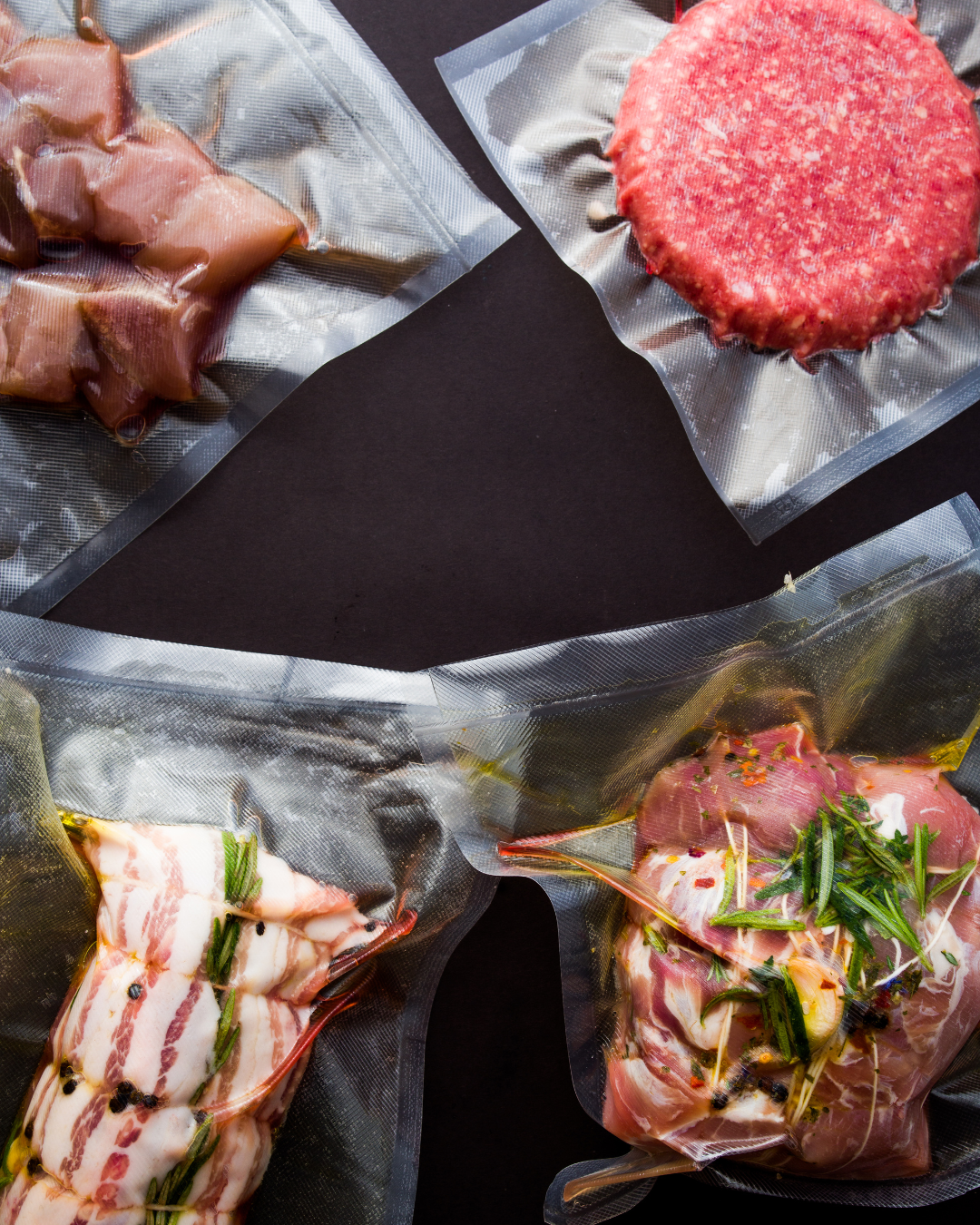
This cooking process works wonderfully for a wide variety of uses. Sous vide cooking can bring proteins like beef and lamb to the ideal temperature and keep them there for hours, preventing overcooking and guaranteeing even cooking from edge to edge. After a brief sear to brown the outside, it's ready to be sliced and served immediately. Because of this, it is perfect for both entertaining and for busy working people who want to eat well at home but don't have time to monitor the meat.
Sous vide is a convenient and reliable way to cook delicate foods like eggs for a large group. You can get dinner on the table every night in a matter of minutes if you perform some advanced meal preparation, such as sous viding a week's worth of proteins and veggies that will only require a fast sear or sauté to warm them back up. Forgot to thaw the steak for tonight's dinner? No problem, just throw it in the water bath frozen and it will cook flawlessly. Finally, if you have any barbecue or party leftovers, you can seal them up and reheat them, even from frozen, without worrying about them becoming dry and tough.
Pros
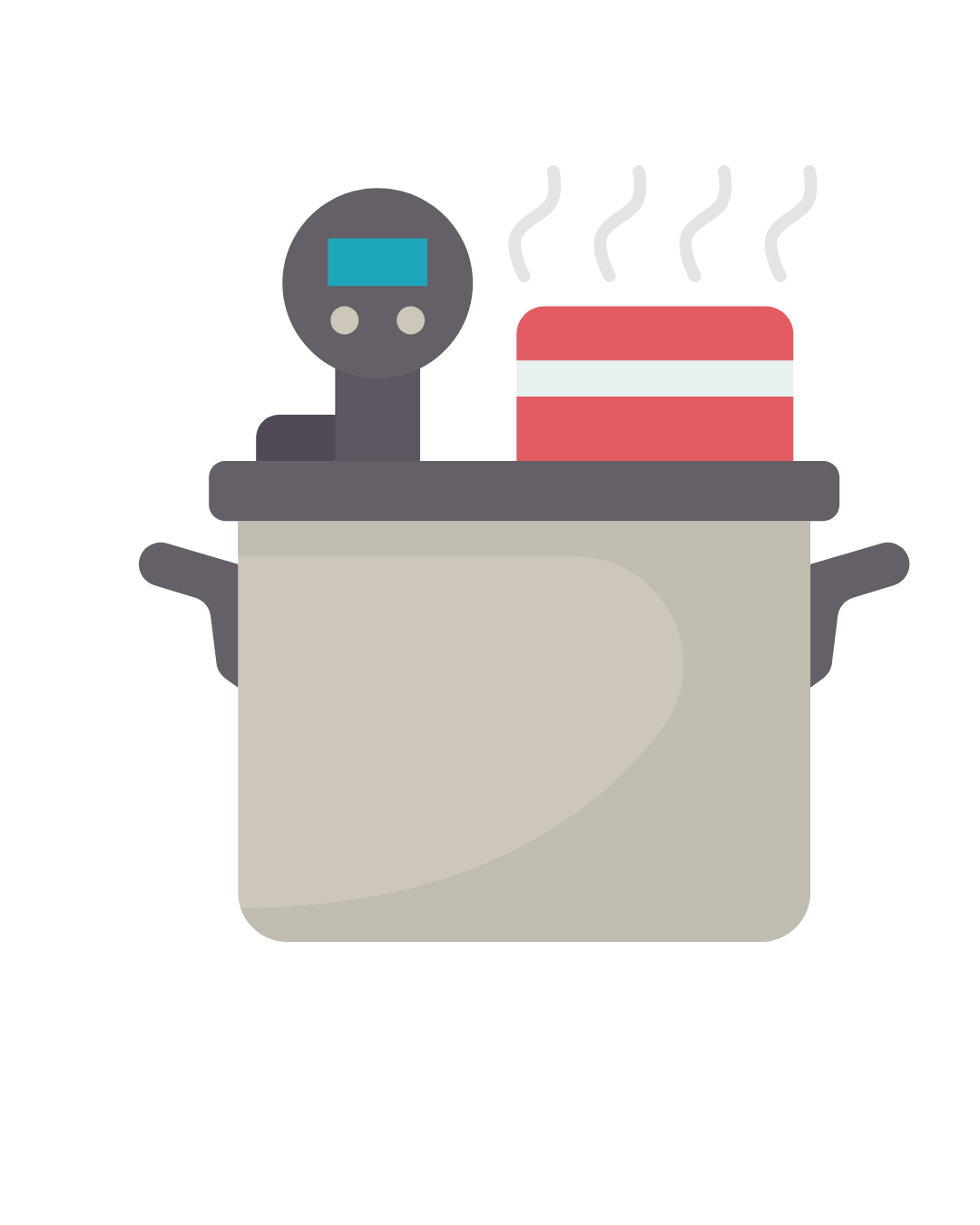
- Uniformly cooked meals
- Exceptionally tender meat
- Precise temperatures are kept steady throughout the cooking
- Flavor enhanced without the use of added fats
- Reliable protein-based findings
Cons
- A longer period of time in the oven is required.
- Some veggies and fish yield inconsistent outcomes.
- needs more focus on food safety measures
- Specialized tools needed (a water oven, for example)
How does sous vide cooking work?
By recirculating the hot water in the container around the bags, the food cooks gently, just to the point where the temperature of the contents reaches that of the water. With this method, you can control the perfect temperature far more precisely than you could with an oven or stovetop.
The Cooking Technique
The piece of meat is broken down into its component parts—muscle fibers, fat cells, collagen, and connective tissue—during the cooking process. For instance, a steak needs less time in the oven than a beef chuck roast because it contains less collagen and connective tissue. Tenderizing a chuck roast, which has fat sandwiched between its muscle, collagen, and connective tissue, can take several hours of slow cooking.
The internal temperature of the sous-vide water oven is regulated to the desired final temperature of the protein being cooked. The water temperature, for instance, is set at 125 degrees Fahrenheit to achieve a medium-rare steak. The interior temperature of the steak will reach the same level as the water bath as it cooks. Steaks can be cooked to an internal temperature of 125 degrees Fahrenheit and then stored in an immersion tank until you're ready to sear or brown them. Sous-vide cooking may tenderize even the toughest portions of meat, but it can take as long as 72 hours.
Sous-Vide Cooking Safety
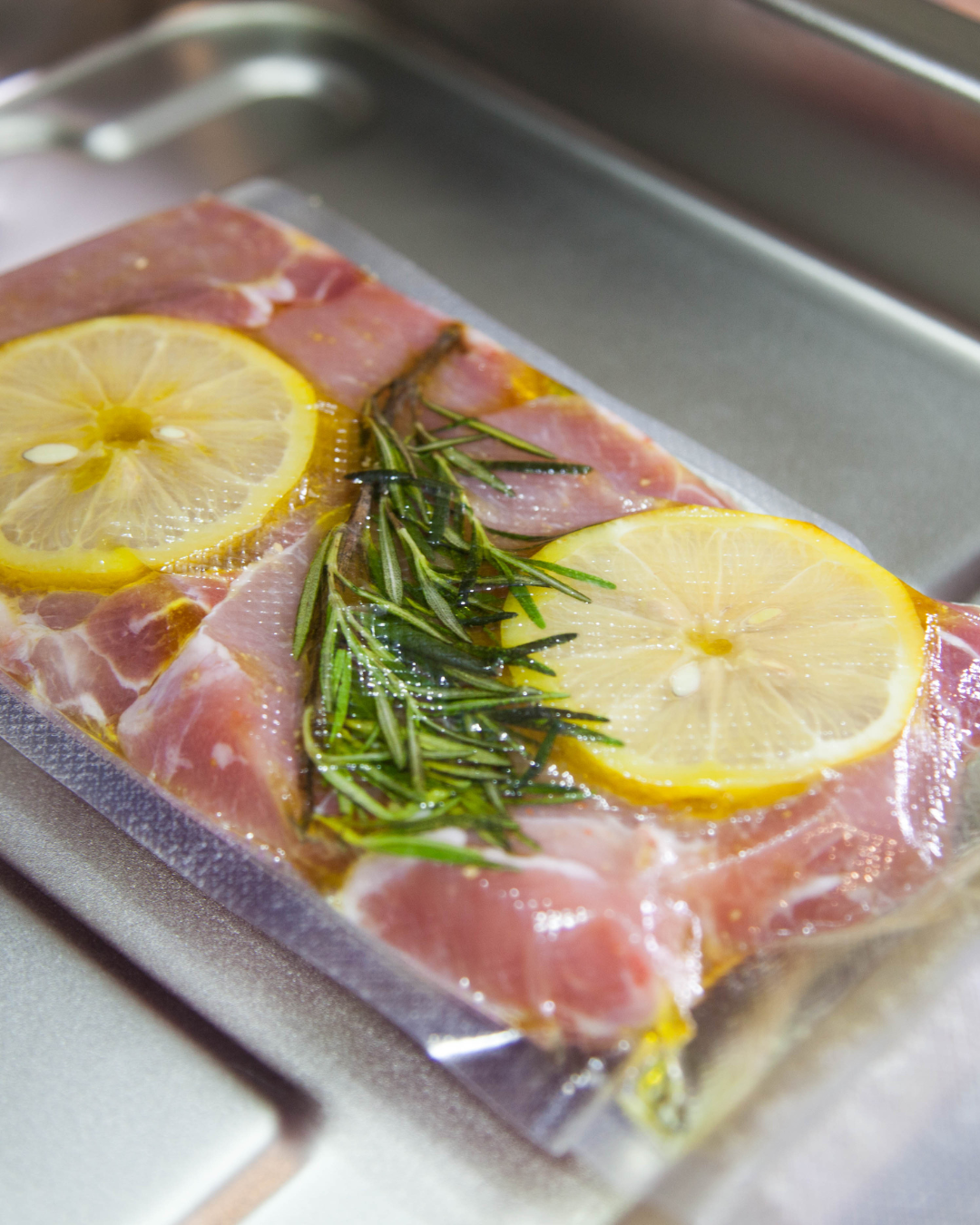
There was a risk of food contamination when using the sous-vide method, hence until recently, it was not suggested for home cooks. Due to the high cost of sous-vide water ovens, many amateur chefs have tried their hand at the technique by simply boiling vacuum-sealed proteins in a pot on the stovetop. However, this method of cooking cannot be precisely controlled, increasing the danger of food poisoning. DIY sous-vide cooking at home was discouraged since poultry and fish, in particular, are susceptible to E. coli and salmonella bacteria if under-cooked (below 130 F).
There are currently a variety of sous-vide cookers and devices available on the market, making it possible for the home cook to employ this cooking technique safely. Manufacturers of sous-vide equipment typically include advice for safely cooking proteins to the minimum required temperature to eliminate the risk of food poisoning (134 degrees Fahrenheit). The meal must be refrigerated before being vacuum-packed, and it must be cooked quickly after being sealed.
More Tips
The Finishing Touches
Using sous vide cooking helps ensure meat will be thoroughly cooked from end to end according to your precise preferences. But while the distinct texture and tenderness of meat cooked sous vide is undeniable, some diners might find the dish lacks a certain X-factor. Consequently, it’s common chef practice for cooked meat to be seared atop a cast-iron skillet prior to serving. The process takes very little time and helps add more crusted flavor to your meat.
Sink to the Bottom
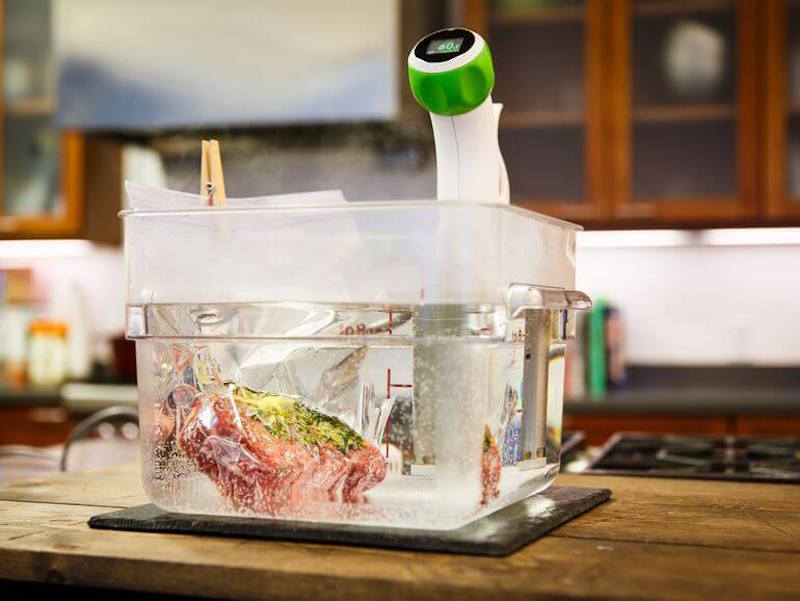
When it comes to the actual cooking process, there are several important things to keep in mind. The vacuum-sealed bag with food in it should always be at the bottom of your water bath. One way to ensure this is by clamping a binder clip to the bottom of your bag then putting an item that will weigh down the bag in-between the bag and clip. This is highly advised because floating bags can potentially lead to improperly cooked food that poses a safety risk.
Patience is a Virtue
Also keep in mind that cooking sous vide can take significantly longer than alternate methods. For example, a slab of meat that takes 8 hours to cook on an outdoor smoker can take a whole day when cooked sous vide. On the bright side, sous vide cooking is an almost entirely hands-off endeavor, which frees up kitchen staff to focus on other important tasks. And since the food takes so long to cook, it’s nearly impossible to accidentally undercook or overcook a dish.
Evaporation is the Enemy
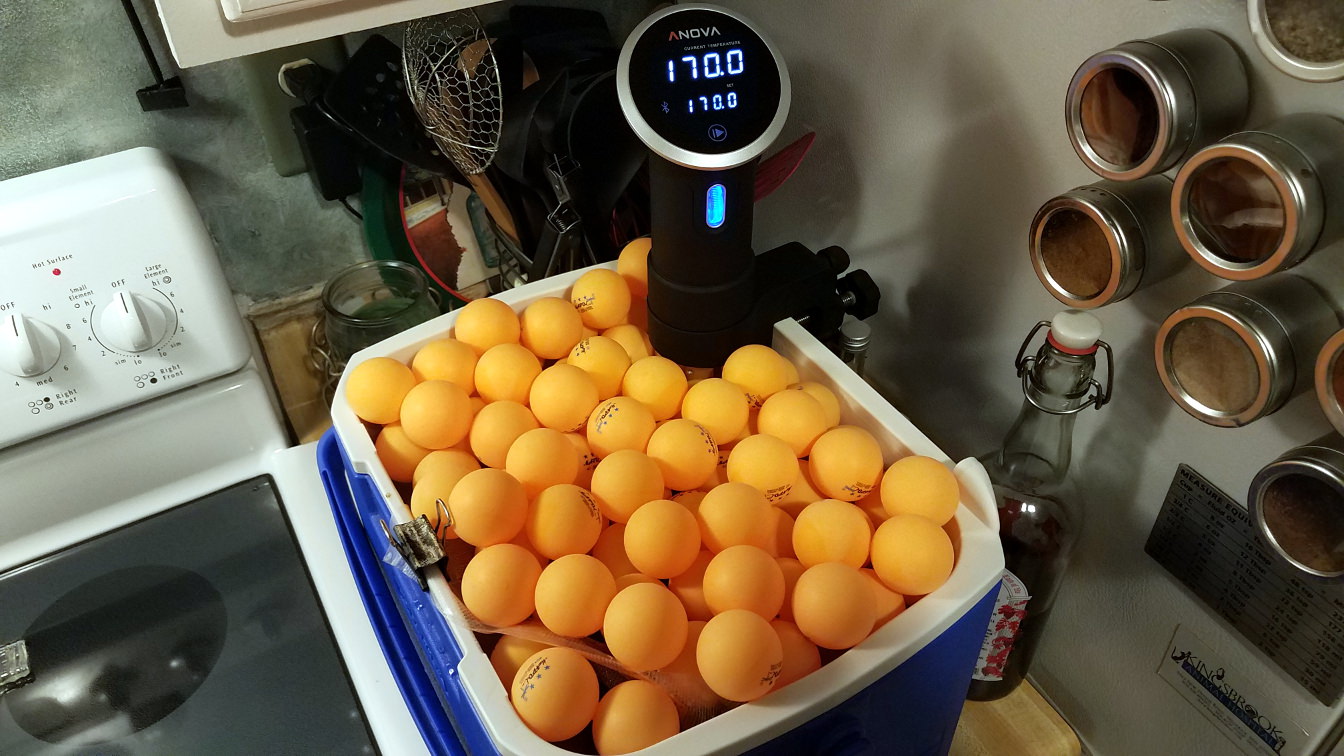
Over the several hours or even days it takes to cook sous vide, it’s possible for the bath’s water to evaporate. Luckily, there are measurements you can take to prevent such an inconvenience. Ping-pong balls are the gold standard for ensuring steam always drips back down into the water bath. Simply make a pile of balls atop the water and let them do their work. If you don’t do this, there’s a chance you’ll need to refill your water bath during the cooking process.
Season with Caution
Seasoning meats is a bit of an art when it comes to sous vide cooking. Since the dishes take so long to cook, herbs and spices infuse especially strong flavors when they’re inside your vacuum-sealed bag. As a result, seasoning meats after sous vide cooking has finished but before searing is an easier and less risky proposition. If you insist on cooking with the seasoning, do a bit of experimenting to see exactly how much is necessary.

